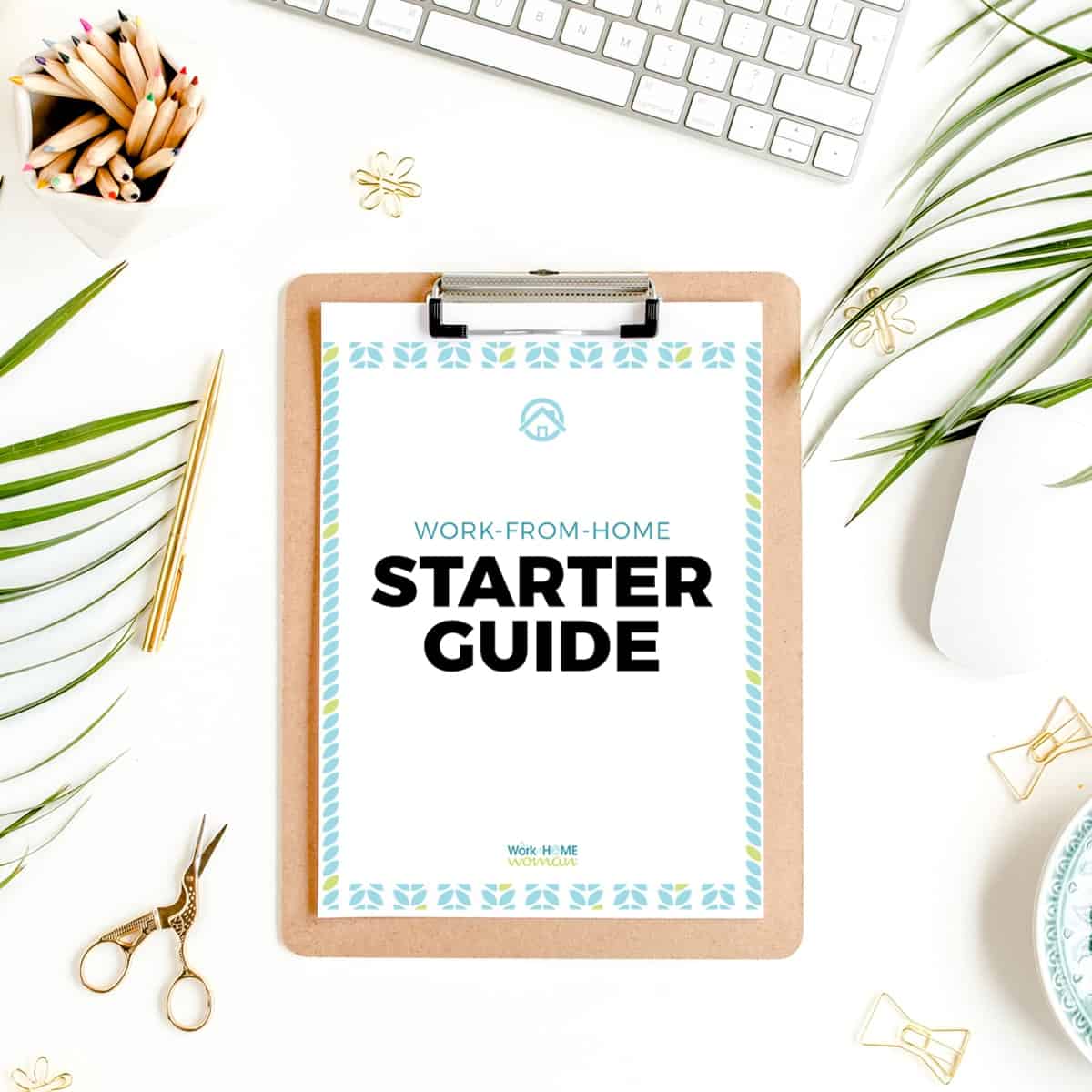
One of the biggest concerns I faced, when I became a new stay-at-home mom, was how to manage our finances. We were used to being a two-income household with no kids, to going down to one income with a new baby.
But let me back up.
When I got pregnant, I knew that I would quit my full-time nursing job to stay home with our daughter. Knowing that I would make this transition, I saved a good portion of each paycheck to prepare.
But even though I had scrimped and planned financially for this transition, I was utterly shocked by how quickly my savings dwindled. As my bank balance got lower and lower, I started looking for work-at-home jobs. I had no clue what I wanted to do. The only things I knew for sure were:
- I didn’t want to work as a nurse
- I needed money now
- And I wasn’t willing to return to the traditional workforce
For months, I looked online for something that I could do, but the majority of my time was spent figuring out what was legit and what was not. It was during my months of research that I came up with the idea for this blog. But, even though I figured out what I wanted to do, the problem was that I still didn’t have funding to start a business.
If you’re a new mom and want to start a business, I’m here to tell you that it is 100 percent possible. These are all the things I did to save money, earn money, and eventually launch my blogging business.
1. Start Selling
When money became tight, I started looking around the house to see what I could sell for cash. As my daughter grew, we began selling baby gear, clothes, and toys — which just doing this brought in a reasonable amount of money. I sold the items at consignment stores, on Craigslist, at used bookstores, and in our local Facebook Swap Group.
From there, I branched out and started selling my old maternity clothes, books, DVDs, CDs, jewelry, shoes, and other household items that we had double of since my husband and I, merged households later in life. To this day, I still sell things online using Facebook Groups and thredUP.
2. Do Side Gigs
While selling stuff brought in some cash, you’ll eventually run out of stuff to sell. When that happens, you’ll need to explore other options. For myself, I started doing side gigs, like participating in focus groups and working the occasional weekend shift at my old nursing job. I know, I said I didn’t want to work as a nurse, but, I was willing to do it for a while to get the funds I needed.
Lucky for you, technology has created a whole new slew of online opportunities that weren’t available to me when I first started — things like online surveys, short tasks, on-demand gigs, smartphone apps, and website testing.
No, these little gigs won’t earn you a full-time income, but every little bit helps. Even though I make a full-time income from my business, I STILL do surveys and use smartphone apps. These small tasks all can be done when you have extra time, and they don’t require any special equipment or training.
By doing these micro-tasks, I’m able to pay for my Starbucks and Amazon book addiction. But, I know people who use these side hustles to pay for vacations, Christmas gifts, paying down debt, and home renovations.
3. Start Freelancing
While I was selling and doing side gigs, I was also looking for something that I could do part-time from home. I looked online, in the wants ads, and I reached out to family, friends, and past employers asking if they had any work for me, or if they knew of anything that I could do from home. My networking efforts paid off, and I started working part-time doing marketing research and acquisition — please note, I did not have experience in marketing, my background was in nursing. When you’re searching for a job, I always suggest starting with your network. People who know you will want to help you and may be willing to take a chance on you, even if you don’t have any experience.
There are also a ton of freelance, remote, and project-based hubs where you can try your hand at freelancing or assignment-based work.
4. Saving Money
To help out financially, I also started looking for ways to save money. A couple of things we did right off the bat that saved us a significant amount each month was to get rid of cable and our telephone landline (which we still do not have to this day). Besides clipping coupons and shopping when stuff was on sale, I did the following things as well.

5. Make the Switch
For a long time, I’d been a loyal consumer of name-brand laundry detergent. I loved how it cleaned my clothes, as well as the way it smelled. But if you’ve ever used this stuff, you know how expensive it can be. So, to save some money, I decided to try out our grocery store’s brand of laundry detergent. Surprisingly, I loved the stuff – it smelled great, cleaned my clothes great, and best of all, it was a fraction of what I paid for the name-brand stuff. Since I had such a good experience with the laundry detergent, I decided to branch out to other products and services. Of course, it takes some trial and error on your part, but the savings can be huge!
6. Ditch the Expendables
Cutting out the expendables in your life, not only adds cash to your wallet, but it’s also good for the environment. Products like paper towels, plastic bags, convenience wipes, and diapers – all add a hefty chunk to your grocery bill, not to mention the added stress on the environment. Replace some of these products with reusable items and watch the savings add up.
Other establishments that encourage green living are Starbucks, where you can bring in your own mug (saving a disposable cup) to get 10 cents off of your drink. Target is another establishment that offers 5 cents off your total bill for each reusable bag that you bring in and use. Whenever you’re out shopping, ask individual stores if they have green initiatives that can save you money.
7. Unsubscribe from Daily Deal Sites
While using daily deal sites seems like a great idea, it can actually cost you money in the long run. There have been numerous times where I have brought discounted deals for restaurants and theme parks, only to let them go to waste, because I wasn’t able to use them before the expiration date. I’ve also found myself making impulse buys because it was a “good deal” – when in reality, I didn’t need the item or service, and it really wasn’t in my budget. If you’re easily swayed into making purchases, I suggest totally unsubscribing from daily deal sites and newsletters from retailers, where they are continually offering enticing discounts.
8. Invest in Yourself
Believe me, when I started out, I didn’t purchase an expensive course to learn the ropes. Each time I would sell my old books at the used book store, I would take the credit that I earned and use it towards new-to-me books that could help me develop my career. In fact, reading is one of the things what got me interested in starting my own business.
Books are not only an inexpensive way to invest in your self-development, but they also help to get your creative juices flowing by stimulating your brain. And there are lots of books about starting your business on a shoestring budget.
Here are a few that I’ve read over the years:
- The Toilet Paper Entrepreneur – Mike Michalowicz
- The Power of Broke: How Empty Pockets, a Tight Budget, and a Hunger for Success Can Become Your Greatest Competitive Advantage – Daymond John
- The $100 Startup: Reinvent the Way You Make a Living, Do What You Love, and Create a New Future – Chris Guillebeau
Conclusion
Saving money for my business didn’t happen overnight. It took small continuous steps in the right direction to make it come to fruition. But with some research, dedication, and sacrifices along the way, I was able to start a business while staying at home with my daughter. If you’re willing you do the work and make the sacrifices; you can accomplish it too!
Originally published August 31, 2012. Content updated on September 13, 2019.







Great article. I have heard of Chris’s books and it is also on my list of reads :) A lot of what you have mentioned are things that we have put into place. Another pretty basic one is just watching what you spend (budget). Have an idea of how much it will take to run your business and try to stay on a budget to come up with the funds to run the business and keep it going.